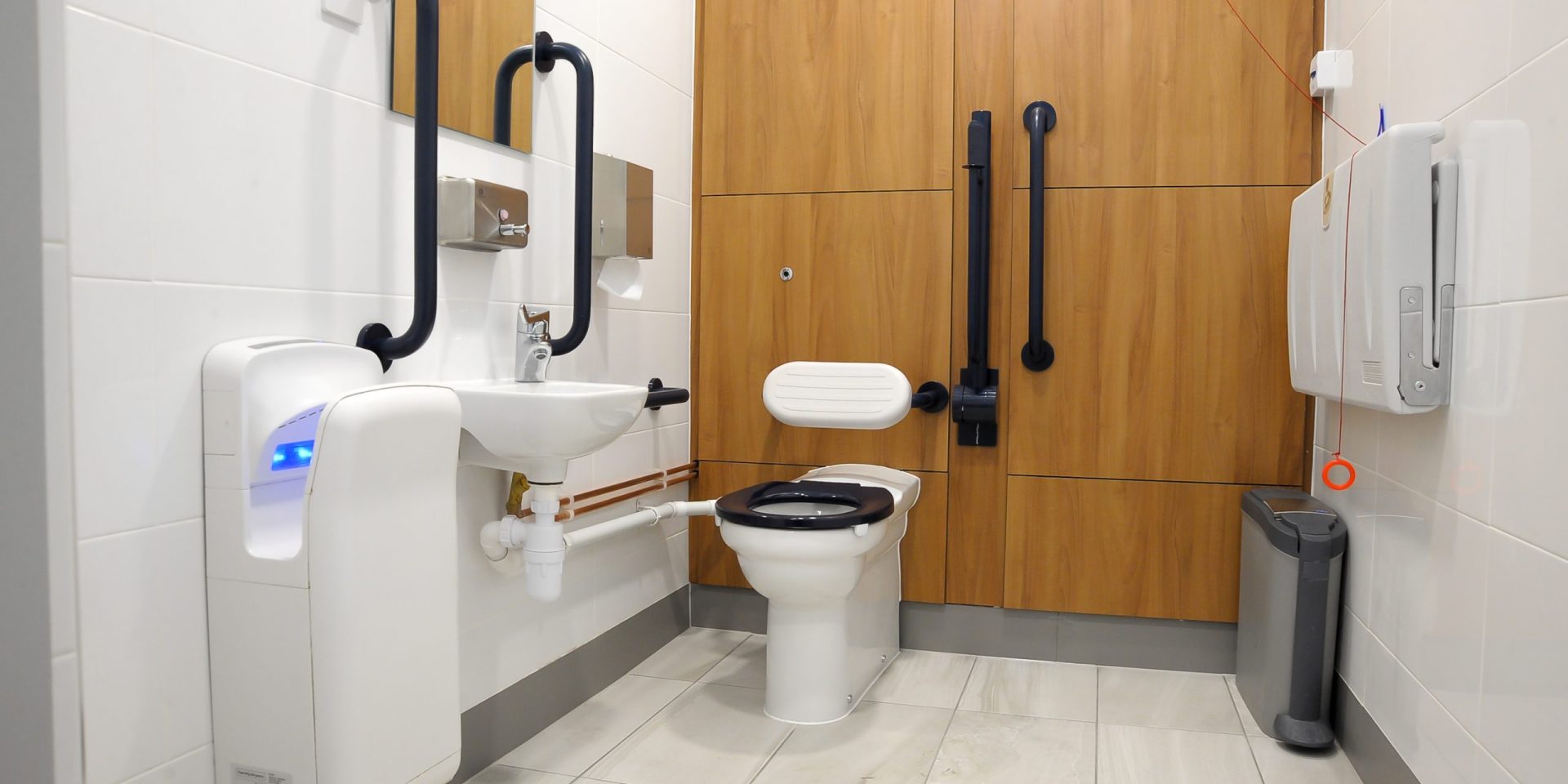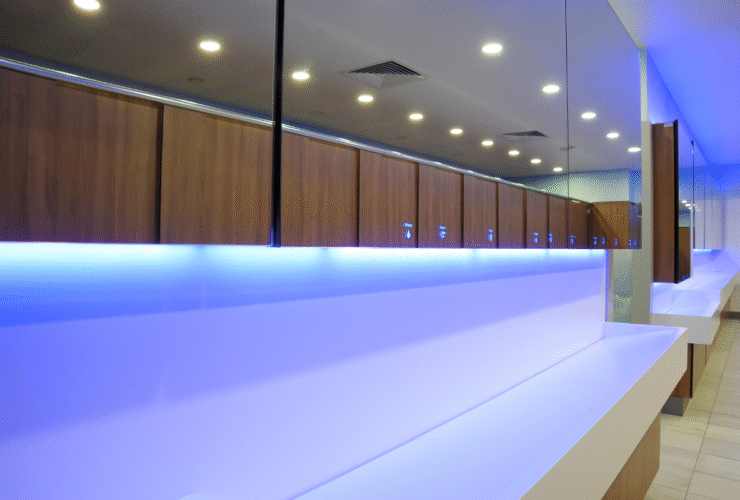In today’s society, creating inclusive spaces is a fundamental part of promoting equality and providing accessibility for all. One crucial area where inclusivity often falls short is in washroom facilities. Designing a great accessible washroom requires careful consideration of key elements that cater to the needs of people with disabilities or limited mobility.
In order to create an engaging and inviting introduction, it is important to focus on the importance of inclusivity and highlight the significance of accessible washrooms.
Welcome to the world of inclusive design! At Interfix, we understand the value of creating accessible spaces that cater to everyone’s needs. In our article, ‘Creating Inclusive Spaces: The Key Elements of a Great Accessible Washroom,’ we will explore the essential components that go into designing washrooms that are both functional and inclusive.
Shying away from the conventional approaches, we delve into the world of accessible washroom design, breaking down the key elements that need to be considered. Discover how thoughtful design can transform washroom facilities, offering comfort and convenience to people of all abilities.
Join us as we explore the crucial aspects of creating great accessible washrooms, ensuring that no one is left behind when it comes to accessing essential facilities with dignity and ease.
The Importance of Creating Inclusive Spaces
In today’s society, the importance of creating inclusive spaces cannot be overstated. Inclusivity is about recognizing and embracing diversity, ensuring that everyone feels welcome and valued. It is about breaking down barriers and providing equal opportunities for all individuals, regardless of their abilities or limitations.
One area where inclusivity often falls short is in the design and accessibility of washroom facilities. Many individuals with disabilities or limited mobility face challenges when it comes to accessing and using washrooms. This can lead to feelings of exclusion, frustration, and even humiliation.
By creating inclusive spaces, we can foster a society that values and respects the needs of all individuals. Accessible washrooms play a crucial role in this endeavour, as they provide a safe and comfortable environment for people with disabilities or mobility limitations to attend to their personal needs with dignity and ease.
Understanding the Concept of Accessibility
Before delving into the key elements of a great accessible washroom, it is important to understand the concept of accessibility. Accessibility refers to the design and provision of environments, products, and services that can be used by individuals with disabilities or limited mobility. It is about removing barriers and ensuring that everyone can participate fully in all aspects of life.
When it comes to washroom facilities, accessibility means designing spaces that can be easily navigated and used by individuals with disabilities or mobility limitations. This includes considerations such as proper layout, accessible fixtures and fittings, adequate signage and wayfinding, appropriate lighting and colour contrast, and regular maintenance and inspections.
By incorporating these elements into the design of washrooms, we can create spaces that are truly accessible and inclusive, allowing people of all abilities to use them comfortably and independently.
The Role of Accessible Washrooms in Creating Inclusive Spaces
Accessible washrooms play a vital role in creating inclusive spaces. They are essential for ensuring that individuals with disabilities or limited mobility can access and use washroom facilities with dignity and independence. By providing accessible washrooms, we are sending a message that everyone is welcome and deserving of equal treatment.
Inclusive washrooms go beyond simply meeting the minimum requirements set by accessibility standards. They are designed with the specific needs of individuals with disabilities in mind, taking into account factors such as manoeuvrability, reach ranges, and ease of use.
When accessible washrooms are incorporated into public spaces such as restaurants, shopping malls, offices, and educational institutions, they not only provide convenience for individuals with disabilities but also promote a more inclusive and accepting society. They send a powerful message that everyone deserves equal access to essential facilities and that their needs are valued and respected.
Key Elements of a Great Accessible Washroom
Designing a great accessible washroom requires careful consideration of key elements that cater to the needs of people with disabilities or limited mobility. Let’s explore these elements in detail:
1. Proper Layout and Design Considerations
The layout and design of an accessible washroom are crucial for ensuring ease of use and manoeuvrability. It is important to provide enough space for individuals using mobility aids such as wheelchairs or walkers to navigate comfortably.
The compliant size of a accessible toilet should be 1500mm x 2200mm internal and the door needs to 900mm wide and outward opening. The entrance of the washroom should be wide enough to accommodate wheelchairs, with a clear path that is free from obstacles. Inside the washroom, there should be ample space for individuals to move around, turn, and access the various fixtures and fittings. Grab bars should be installed near the toilet and in the shower area to provide support and stability.
Additionally, it is important to consider the placement of sinks, mirrors, and hand dryers at appropriate heights that can be easily accessed by individuals using wheelchairs or with limited reach. The use of contrasting colours for walls and fixtures can also help individuals with visual impairments navigate the space more easily.
2. Accessible Fixtures and Fittings
The choice of fixtures and fittings in an accessible washroom is crucial for ensuring ease of use and comfort for individuals with disabilities or limited mobility. Some important considerations include:
- Toilet: Installing a raised toilet seat or an adjustable-height toilet can make it easier for individuals with mobility limitations to transfer onto and off the toilet. Handrails should be installed on either side of the toilet to provide support and stability.
- Sinks: Sinks should be installed at an appropriate height that can be easily accessed by individuals using wheelchairs or with limited reach. Lever or sensor-operated faucets can be more accessible for individuals with limited dexterity.
- Showers: Showers should have a roll-in or walk-in design with no steps or barriers. Adjustable showerheads and handheld shower wands can provide greater flexibility for individuals with disabilities or limited mobility.
3. Ensuring Proper Signage and Wayfinding
Clear and visible signage is essential for guiding individuals to accessible washrooms. Signage should comply with accessibility standards, with clear symbols and contrasting colours for easy recognition.
In addition to exterior signage, it is important to provide clear wayfinding signage within the building to direct individuals to the nearest accessible washrooms. This can include floor plans, directional signs, and tactile signage for individuals with visual impairments.
4. Importance of Proper Lighting and Colour Contrast
Good lighting is essential in creating an inclusive washroom environment. Proper lighting ensures that individuals with visual impairments can navigate the space safely and comfortably.
In addition to adequate lighting levels, it is important to consider colour contrast in washroom design. Using contrasting colours for walls, fixtures, and signage can help individuals with visual impairments differentiate between different elements and navigate the space more easily.
5. Maintenance and Regular Inspections
Creating a great accessible washroom is not a one-time effort. Regular maintenance and inspections are crucial for ensuring that the washroom remains accessible and functional over time.
Maintenance should include regular checks of fixtures and fittings to ensure they are in proper working order. It is also important to promptly address any issues or repairs to prevent accessibility barriers from arising.
Regular inspections can help identify any potential accessibility issues and ensure that the washroom continues to meet the needs of individuals with disabilities or limited mobility.
Conclusion: Creating an Inclusive Society through Accessible Washrooms
In conclusion, creating inclusive spaces is a fundamental part of promoting equality and providing accessibility for all. Accessible washrooms play a key role in this endeavour by providing essential facilities that cater to the needs of individuals with disabilities or limited mobility.
By considering the key elements of a great accessible washroom, including proper layout and design considerations, accessible fixtures and fittings, adequate signage and wayfinding, appropriate lighting and colour contrast, and regular maintenance and inspections, we can create washrooms that are truly inclusive and welcoming to all individuals.
At Interfix, we are committed to creating accessible spaces that prioritize inclusivity and equal access. We believe that by designing and providing great accessible washrooms, we can contribute to the creation of an inclusive society where everyone can participate fully and independently in all aspects of life.
Join us in our mission to create inclusive spaces and ensure that no one is left behind when it comes to accessing essential facilities with dignity and ease. Together, we can build a more inclusive and accessible future for all.
.



